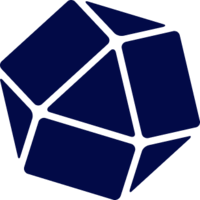-
InfluxDB
Power Real-Time Data Analytics at Scale. Get real-time insights from all types of time series data with InfluxDB. Ingest, query, and analyze billions of data points in real-time with unbounded cardinality.

-
MiDaS
Code for robust monocular depth estimation described in "Ranftl et. al., Towards Robust Monocular Depth Estimation: Mixing Datasets for Zero-shot Cross-dataset Transfer, TPAMI 2022"
-
SaaSHub
SaaSHub - Software Alternatives and Reviews. SaaSHub helps you find the best software and product alternatives

-
Marigold
[CVPR 2024 - Oral] Marigold: Repurposing Diffusion-Based Image Generators for Monocular Depth Estimation
We will use the Hugging Face transformers and diffusers libraries for inference, FiftyOne for data management and visualization, and scikit-image for evaluation metrics.
We will use the Hugging Face transformers and diffusers libraries for inference, FiftyOne for data management and visualization, and scikit-image for evaluation metrics.
💡For this walkthrough, we will only use the NYU depth v2 portions. NYU depth v2 is permissively licensed for commercial use (MIT), and can be downloaded from Hugging Face directly.
In this section, we’ll show you how to generate MDE depth map predictions with both DPT and Marigold. In both cases, you can optionally run the model locally with the respective Hugging Face library, or run remotely with Replicate.
For a long time, the state-of-the-art models for monocular depth estimation such as DORN and DenseDepth were built with convolutional neural networks. Recently, however, both transformer-based models such as DPT and GLPN, and diffusion-based models like Marigold have achieved remarkable results!
For a long time, the state-of-the-art models for monocular depth estimation such as DORN and DenseDepth were built with convolutional neural networks. Recently, however, both transformer-based models such as DPT and GLPN, and diffusion-based models like Marigold have achieved remarkable results!
The checkpoint below uses MiDaS, which returns the inverse depth map, so we have to invert it back to get a comparable depth map.
git clone https://github.com/prs-eth/Marigold.git